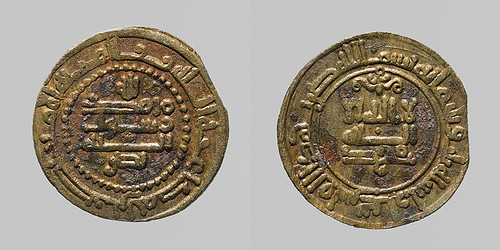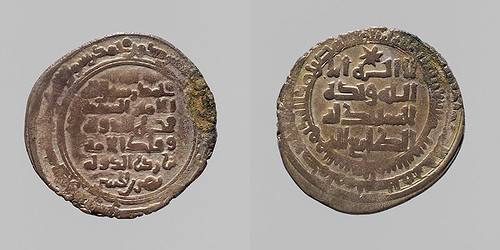
PREV ARTICLE
NEXT ARTICLE
FULL ISSUE
PREV FULL ISSUE
MET PUTS RARE COINS FROM NISHAPUR ONLINEHelen Goldenberg from the Islamic Department of The Metropolitan Museum of Art writes: "We recently published an essay on our Heilbrunn Timeline of Art History on a selection of rare coins excavated at the city of Nishapur by the MET in the 1930's and 40's. As you may know, these are only a fraction of our extensive collection of over 600 coins from this excavation in the MET's collection. We would like to announce the publication of this timeline essay to the community of scholars and collectors of Islamic coins." Thanks to David Yoon for suggesting publication here in The E-Sylum. Here's the project description with a link to the site. -Editor Rare Coins from Nishapur in the Collection of the Metropolitan Museum of Art  This new Timeline essay focuses on a group of rare coins excavated at Nishapur in northeastern Iran between 1935 and 1948 by the Metropolitan Museum of Art in partnership with the Iranian government. The two countries divided the finds, which resulted in the addition of 636 early and medieval gold, silver and copper Islamic coins from the eighth to the fourteenth century to the MET's collection. Thanks to the expertise of Abdullah Ghouchani, a numismatist and gifted epigrapher who spent most of his career working at the National Museum and teaching at Tehran University, the whole of the Met's collection has now been catalogued and is available, complete with inscriptions (when legible), on the museum's website. Although segments of the Nishapur collection, such as ceramics, metalwork and glass have been published by excavators and scholars, the coins had never been properly documented or published. As a mine of rich historical, cultural and economic information about the medieval mercantile city of Nishapur, the coins shed new light on the city's importance as hub of trade on the Silk Road. Due to the generous support of the Roshan Cultural Heritage Institute, the coins of Nishapur are now published online. Their availability helps amplify our understanding of the material culture of this crucial city, whose ceramics, glass, metalwork and wall paintings are also available in online catalogues on the Met's website. Here is an excerpt from an essay on the site by Abdullah Ghouchani of the National Museum of Iran and Sheila Canby of the Department of Islamic Art, The Metropolitan Museum of Art. -Editor  What makes an early Islamic coin rare? You might think that just by virtue of dating from the eighth or ninth century and being found in northeastern Iran, a coin would be exceptional. Yet, of the more than 1,200 early coins excavated at Nishapur during the 1930s and '40s by The Metropolitan Museum of Art in collaboration with the Iranian government, only thirty-seven of them would be considered rare. Some were minted in places from which few early Islamic coins are known, and others bear the names of governors or other rulers better known from historical texts than coins. Although the city of Nishapur in Khurasan is rightly celebrated for its ceramics, glass, and metalwork of the Samanid period (ca. 819–1005), the significance of the city as a center of trade from the eighth to the fourteenth century is most directly reflected in the coins. According to their agreement, Iran and The Met divided the finds, resulting in more than 5,000 objects entering the collection. The study of Islamic coins from Nishapur follows publications of the city's early and medieval Islamic ceramics, glass, metalwork, and architecture. The Arab conquest of the lands from Spain to Iran in the seventh and eighth centuries opened trade routes between the former Byzantine and Sasanian regions united under the Umayyad and then Abbasid caliphates. Along with the exchange of goods, coinage circulated widely. Some of the rarest coins traveled a great distance before ultimately ending up in the ground at Nishapur. While we can only imagine how a particular coin found its way there, the names of individuals on the coins shed light on the political situation of their time. The coins come in three types: gold, silver, and copper, called dinar, dirham, and fals in Arabic. Whereas the names of Abbasid caliphs (temporal and spiritual leaders of the Muslim community) and overlords appear on silver and gold coins, copper coins bear the names of leaders of lesser rank as a form of acknowledgment of their rule. Additionally, mint marks indicate where the coins were struck.  To visit the online exhibit, see:
 Wayne Homren, Editor The Numismatic Bibliomania Society is a non-profit organization promoting numismatic literature. See our web site at coinbooks.org. To submit items for publication in The E-Sylum, write to the Editor at this address: whomren@gmail.com To subscribe go to: https://my.binhost.com/lists/listinfo/esylum All Rights Reserved. NBS Home Page Contact the NBS webmaster 
|